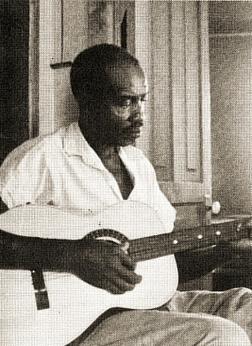As a guitar teacher deeply immersed in the world of blues, I often find myself drawn to the unique styles and histories of early blues musicians. One such intriguing figure is Floyd Council, a Piedmont blues artist from Chapel Hill, North Carolina.
Though Floyd Council and Pink Anderson never met, their names were immortalized together by the legendary rock band Pink Floyd. The band combined their names as a tribute to these influential bluesmen, despite the two never having crossed paths in real life.
Floyd Council was an integral part of the Chapel Hill blues scene during the early 20th century. His music career was marked by his distinctive fingerpicking style, which was a hallmark of the Piedmont blues tradition.
This style is characterized by a syncopated fingerpicking technique that creates a rhythmic, melodic sound, distinguishing it from the more straightforward Delta blues. Council's guitar work was intricate and lively, reflecting the vibrant blues tradition of the Carolina region.
Notable Songs by Floyd Council
- "Runaway Man Blues"
- "Working Man Blues"
- "I'm Grievin' and I'm Worryin'"
- "Lookin' for My Baby"
Jim performs 'Poor Ain't Got A Dime' by Council
Collaborations with Blind Boy Fuller
In addition to his solo work, Floyd Council also collaborated with other prominent blues artists. He played alongside Blind Boy Fuller, another significant figure in the North Carolina blues scene. Fuller's influence on the Piedmont blues was profound, and Council contributed to several of his recordings, including:
- "I'm a Rattlesnakin' Daddy"
- "Step It Up and Go"
- "Mama Let Me Lay It on You"
- "Rag, Mama, Rag"
The Chapel Hill blues scene was a melting pot of talent during the early 20th century, with artists like Floyd Council and Blind Boy Fuller at the forefront. Their music was a reflection of the rich cultural tapestry of the Carolina region, blending African American musical traditions with local influences. This vibrant blues scene laid the groundwork for future generations of musicians.
Despite the passage of time, the legacy of Floyd Council and his contributions to the Piedmont blues endure. His recordings continue to inspire blues enthusiasts and musicians alike, serving as a testament to his skill and creativity.
The fact that his name lives on through Pink Floyd is a testament to the lasting impact of his work, even if he and Pink Anderson never met.
For those interested in exploring the blues tradition, the music of Floyd Council offers a fascinating glimpse into the history of this genre. His songs capture the essence of the Piedmont blues, showcasing the intricate guitar work and emotive storytelling that define this style.
Whether you're a seasoned musician or a newcomer to the blues scene, delving into the recordings of Floyd Council is a rewarding journey into the heart of American music.
Blind Boy Fuller Sideman - South Carolina Piedmont Blues
 If you search authoritative web sites for "Floyd Council", you often get references to Pink Floyd, the 1970s mega-group. It's said that Sid Barrett used the names of Floyd Council and Pink Anderson, another 'minor' blues man, for the name of their new group.
If you search authoritative web sites for "Floyd Council", you often get references to Pink Floyd, the 1970s mega-group. It's said that Sid Barrett used the names of Floyd Council and Pink Anderson, another 'minor' blues man, for the name of their new group.
He became a well-known practitioner of the Piedmont blues sound from that area, popular throughout the southeastern region of the US in the 1930s.
Born in Chapel Hill, North Carolina, United States, to Harrie and Lizzie Council, Floyd began his musical career on the streets of Chapel Hill in the 1920s, performing with two brothers, Leo and Thomas Strowd as "The Chapel Hillbillies".
In the late 1920s and early 1930s he and Blind Boy Fuller busked in the Chapel Hill area. He recorded twice for ARC at sessions with Fuller in the mid-thirties, all examples of the Piedmont style.
Council suffered a stroke in the late 1960s which partially paralyzed his throat muscles and slowed his motor skills, but did not significantly damage his cognitive abilities.
Folklorist Peter B. Lowry attempted to record him one afternoon in 1970, but he never regained his singing or playing abilities. Accounts say that he remained "quite sharp in mind".
Council died in 1976 of a heart attack, after moving to Sanford, North Carolina. He was buried at White Oak AME Zion Cemetery in Sanford. (Source: wikipedia)
How Many Sides Did Floyd Record?
There aren't any records out there which just feature Floyd Council and his guitar. There is a CD however, called Carolina Blues, which contains six of his songs: "Lookin' For My Baby", "I'm Grievin' and I'm Worryin", "I'm Broke and I Ain't Got a Dime", "Working Man Blues", "Runaway Man Blues" and "I Don't Want No Hungry Woman".
Fuller did take the Trice Brothers to recording sessions sometimes but he didn't either one to record with him - Floyd played second guitar to Fuller on seven tracks on songs like Oozin' You Off My Mind and Boots and Shoes. Both Fuller and Reverend Gary Davis had a lot of respect for his guitar technique.